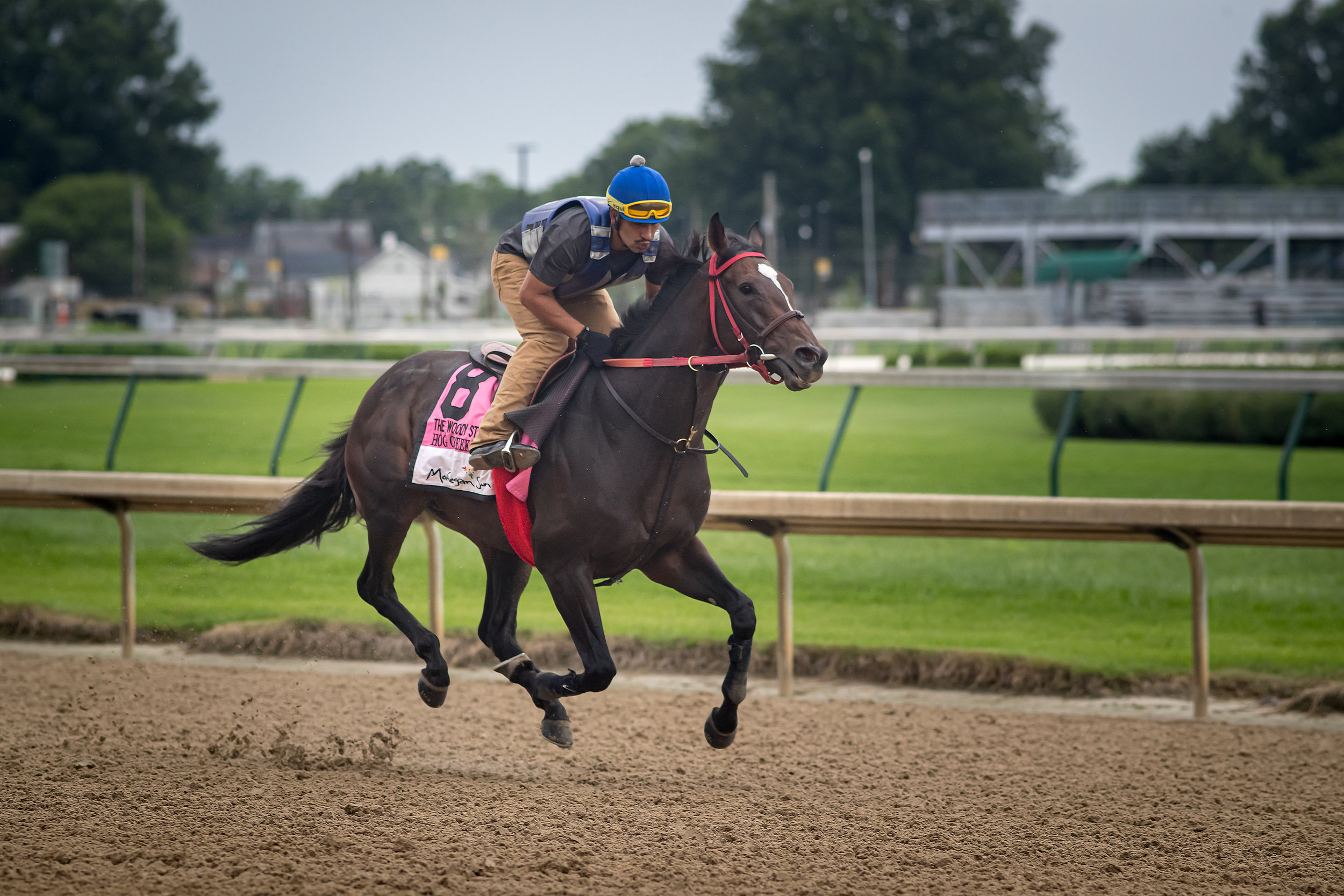By Ed Golden
“When I learn that a nation can live without bread, then I will believe that the French people can live without glory.”—Charles de Gaulle
Leonard Powell can live without neither, although with a workload that consumes the majority of his very existence, he still finds time for required sustenance and moments of exultation when they present themselves.
The 42-year-old Frenchman is a world-class horseman, weaned on Thoroughbreds from early youth, starting on his family’s 200-acre stud farm in Normandy followed by stops around the globe in Australia, England, Singapore and the United States, and calling California home since 2004.
When attempting to buttonhole him in person, however, an APB might come in handy. At Santa Anita, his base of operations, a sighting at the track’s popular early morning watering hole, Clockers’ Corner, is rarer than a Triple Crown sweep.
Leonard Powell is either sedulously conducting business at his barn, or high upon horseback supervising jogs, gallops and breezes on the track.
A former amateur jockey in France, where he rode in steeplechase races as well as on the flat, landing in the winner’s circle on occasion, his work schedule is Trumpian sans the tweets.
“I wake up at 3:45 and leave the house just after four,” Powell said explaining a typical day—his accent as thick as one of France’s nearly 300 varieties of cheese. “I get to the barn just after 4:30, check the horses and provide any medications as needed.
“The first set of horses goes out at 5 o’clock, so from 5 o’clock until 10 o’clock I’m on horseback, either on a Thoroughbred or a pony. At 10 we school horses if necessary, review their condition with a veterinarian or myself, check on the horses that worked the day before or that morning.
“That takes us to 11:30 or 12. Usually from 12 to about two I go over paperwork that needs to be done in the office. In the afternoon, we go to the races when we have horses running, or back to the barn feeding, walking or grazing them until 4:30.”
Powell’s day begins well before he arrives at the barn. He commutes from his West Hollywood home to the Arcadia track, a stretch of 25 miles.
“I was living in West Hollywood when I was stabled at Hollywood Park (which closed in December of 2013),” Powell said. “I have three daughters (Louise, 14, Blanche, 13 and Jeanne, 9) and they were going to a bilingual school that taught French and English.
“When I moved my barn to Santa Anita, the kids were doing very well, so I decided to make the commute instead of them. I didn’t want them to change schools.
“Actually, my commute in the morning is easy, because at 4 o’clock, there’s not much traffic. I can make it in 25 minutes going with the traffic. In the evenings, when I’m against the traffic, it can take 45 minutes.”
Married to Mathilde—his sweetheart from their days at Caen University—all their children enjoy racing, particularly Jeanne who rides and spends time with her father at the track on weekends.
Of the 25 head Powell has in training, by far the most celebrated is an 11-year-old gelding named Soi Phet. The tassel-haired trainer was not suffering from insipience when he made the claim for $16,000 at Hollywood Park on May 23, 2013.
Since then, the California-bred son of Tizbud has achieved success of mythic proportions, and after a recent freshening, is expected to resume his racing career.
“I’m going to take my time with him,” Powell said, “but I would expect him to return to the races at some point.”
When Soi Phet posted a 47-1 upset winning Santa Anita’s $100,000 Crystal Water Stakes by a head at age 10 in 2018, he was believed to be the oldest horse ever to win an added money event at the storied track, which opened on Christmas Day, 1934.
The Crystal Water was his 58th career start.
“At the time I claimed him, he had all his conditions,” Powell explained. “He had only won a maiden 20, he was a non-winner of two (races), he was a Cal-bred; it was the spring of 2013, and the Del Mar meet was coming up with very generous purses.
“When I took him, it was because he had conditions left, and I felt I could move him up.”
Wow and double wow! Eight stakes wins and a million dollars in earnings later, Powell now looks like the Nostradamus of trainers.
When he has occasion to give a leg up and pre-race instructions to jockeys Brice Blanc, Julien Couton, Florent Geroux, Julien Leparoux and Flavien Prat, fellow Frenchmen all, the bilingual Powell does what comes naturally.
“If the owner of the horse is there,” Powell said, “I speak English so that he can understand. But if it’s only me and the rider, we speak French.”
TO READ MORE —
BUY THIS ISSUE IN PRINT OR DOWNLOAD -
Triple Crown 2019, issue 52 (PRINT)
$6.95
































